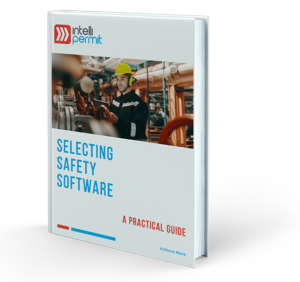Why is a computer based permit system better than paper?
IntelliPERMIT is not a computer based replica of a paper-based permit system, nor is it a bolt on to a maintenance system. Intelligent safety rules, enforced system controls, auditability, visibility etc. are all enhanced over paper-based systems and represent a step change in safety integrity and reliability.
A traditional permit to work system is managed by filling out paper forms in a permit book. While this can work in many situations there are numerous opportunities to improve the permit process by rethinking the paper system altogether and making use of modern computer systems to ultimately improve safety.
A paper system has the benefits of being simple, standardized and relatively easy to understand. However with familiarity comes a very real downside that people start taking short cuts, fill out forms by rote and don’t pay sufficient attention to the specific hazards of the job. Paper permits most often end up being filed away and there is no way the company can benefit from the insights possible when work is controlled by an electronic system.
A downside to paper based permit systems
Some of the challenges with paper-based systems include:
- Lost paper work
- Preprinted forms are inflexible in layout and this can mean massive duplication of information across multiple pieces of paper
- Illegible script
- The cost of re-printing permit books when rules or procedures change
- Finding a place to securely index and store completed permit books as part of the permanent plant record
- It is difficult and time consuming to audit permits to look for systematic problems with safety
- There is no quick and easy visibility of work in progress without physical access to each permit book
- There is no easy mechanism to check for permits that are not signed off, particularly as contractors and empoyees leave site after their shift
- There is no easy way to prevent filling in the permit by a implicated party after an incident (to cover up tracks). This is particularly serious where someone is hurt or injured and the permit becomes a vital piece of evidence demonstrating whether or not the safety procedures were properly followed
- It is difficult to cross reference permits or isolations where different job scopes impact on each other
All of these challenges are substantially reduced or eliminated by implementing a computer based system.
A computer based system will enable a number of additional checks to be incorporated in the permit process, while at the same time improving productivity of teams and ultimately in improving safety.
Conclusion
A computerised permit to work system overcomes many of the difficulties of a paper-based system. But beyond that, it opens a whole new set of possibilities for supporting safe work practices in a plant environment. Technology is becoming more and more pervasive in industry, and the future holds many exciting possibilities for technology assisted processes. But you have to start somewhere, and getting a platform like IntelliPERMIT in place will open up numerous new possibilities to enhance safety.
If you would like to learn more about computerised permit to work systems and IntelliPERMIT please contact our experienced team at Adapt IT who will be more than happy to assist you.
Article by Scott Bredin
Free Guide - Selecting Safety Software

Learn why safety management software is necessary to support a modern industrial operation, the different types of software applications, and helpful, practical advice on how to undertake a safety software selection process in your own company.
Get started today, download your guide and take the next step towards world-class safety management.

Continue Reading
Q&A with IntelliPERMIT Consultant Lungelo Majozi
Explore the advantages of electronic permit to work (e-PTW) systems over paper methods, from faster investigations to specific hazard management. Learn how e-PTW enhances safety, prevents redundant isolations, and ensures accountability. Discover future trends like 3D modeling. IntelliPERMIT automates tasks, improves communication, and reduces costs, making workplaces safer and more efficient.
Powering Safety Innovations: An Exclusive Q&A with IntelliPERMIT Consultant Shirley Breytenbach
IntelliPERMIT transforms permit management with streamlined processes, competency-based approvals, and real-time visibility. Ensure regulatory compliance, enhance worker safety, and boost operational efficiency. The system offers seamless integration, empowering organisations to proactively mitigate safety risks.
Safety Software Implementation Success : An Exclusive Q&A with IntelliPERMIT Consultant Henry Boshoff
Unlock safety software success with IntelliPERMIT: Prioritise key features, secure user buy-in through change management, and foster collaboration. Set measurable goals, leverage incident data for proactive decisions, and ensure intuitive search capabilities. Streamline report generation and simplify scheduling and management of training, drills, toolbox talks, and audits. Overcome adoption challenges by addressing pain points and customizing the software. Enhance user adoption with automation and user-friendly interfaces. Evaluate safety software providers based on knowledge, experience, and adherence to standards—IntelliPERMIT excels. Easily integrate with existing systems through standard APIs. Opt for web-based software for accessibility and usability. IntelliPERMIT enhances safety practices and compliance.



